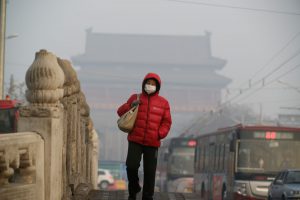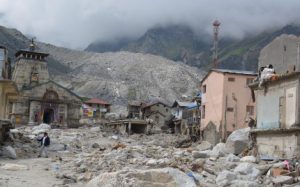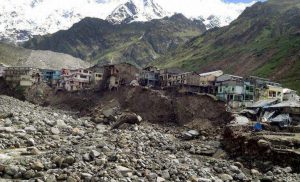If you’re relatively wealthy you can avoid living next to a congested road or factory. You may still breathe the same air as everyone else in your town or city, but the chances are, it won’t be quite as bad.
What’s more, you can probably afford to drive to work and drop your children off at school, rather than having to pass through traffic as you walk.
This is the injustice of air pollution, as it is for many other examples of environmental pollution. And it is this injustice that has spurred countless protests around the world, from Kunming to Washington DC.
For some of these issues, a street protest or publicity campaign may be enough perhaps to close a factory temporarily or force a company to stop discharging toxic waste into a local river.
However, traditional NGO tactics do not always work. For issues such as air pollution, where the policy responses required are so far-reaching and entrenched interest groups like the car industry are so strongly opposed to change, a successful solution may take decades to see the clear light of day.
Which is where the law comes in and NGOs like Client Earth, an organisation employing specialist lawyers to take companies and the government to court over environmental issues. After recent success in the UK courts over air pollution, other NGOs are now looking to replicate their success.
Using the courts
In China it is not easy to sue the government. You can sue a company, say if you live by a polluted river, but it wouldn’t be possible yet to bring the cases against the government.
Conversely, while it is possible to sue both the government and companies in Europe, environmental NGOs there have had a poor reputation when it comes to taking legal action. Courts have been seen as complicated and bureaucratic and most of the very few lawyers that did work for NGOs spent their time on internal issues, rather than fighting legal cases.
In contrast, US-based NGOs have been employing lawyers and using the courts since the beginning of the environmental movement in the 1960s. Recent estimates suggest there were around 100 lawyers working inside environmental NGOs in the US, compared to just 20 in Europe, most of whom weren’t actually practicing as lawyers.
One of those long-time US legal activists is James Thornton, who helped set up the Los Angeles office of the Natural Resource Defense Council, which itself started out as a group of six lawyers. Thornton relocated to Europe five years ago, and dismaying at the lack of legal power being used by environmental groups, set up Client Earth, his own team of activist lawyers.
“As long as you have resources to carry through your case, the law really does level the power between the average citizen and a big multinational, or an NGO and the government. If you select your cases in the right way, the amount of money the other side have becomes irrelevant. That’s what’s so great about it,” says Thornton.
He says Europe has been suffering from the environmental movement’s failure to make use of the courts and legal tactics.
“There’s lots of laws here but they’re not getting implemented or enforced and what’s more they’re often written in such a way that they are hard to enforce.
“From my point of view, that was because the organisations campaigning for them were in those negotiations and didn’t have the capability to draft amendments and fight on a point by point basis. Whereas on the other side, the governments and companies have lawyers who are trying to shape the law to meet their needs.
“The environmental movement really hasn’t been on an equal footing up to now,” he adds.
One of the first campaigns his team of lawyers took on will probably end up being one of its most significant successes in the long-term, as it focuses on the cost of bringing court cases.
In the US, it has historically been easier for NGOs to win cases, compared to other countries, as each side pays their own costs and if it’s an environmental case and you win, you get your costs paid by the other side.
However, in the EU, it’s been much harder as if you lost your case, you have had to pay the other side’s costs, even though you were bringing the case in the public interest. Faced with possible costs of millions of pounds, environmental groups have been reluctant to bring cases and face the prospect of bankruptcy.
There are also additional hurdles, for instance in Germany, you have to prove you have personally been affected by the issue, before being able to bring a case to court – notoriously difficult in environmental cases.
Client Earth has successfully challenged differences in the fee structure between Europe and the US using a previously little-known EU law – The Aarhus Convention – making it far easier for environmental groups in the future to bring court cases in the public interest.
Another less glamorous success story has been Thornton’s team of lawyers’ work to “re-write” the EU’s Common Fisheries Policy, which governs the amount of fish that can be caught from European waters.
“The law as it stands stinks, it is really terrible. For example, it lets the number of fish, the quota, be determined not by science but by politicians. You get a scientific assessment and then EU officials meet behind closed doors and decide the quota themselves. That really has to be changed, or nothing will improve,” says Thornton.
Air pollution court case
In terms of public recognition, the most well-known case taken on by Client Earth has been on air pollution, where lawyers from the NGO have spent the past five years battling the UK government to do more to improve air quality.
While citizens in Beijing or Guangzhou might not sympathise too much, levels of dangerous particulate matter in London are amongst the worst of any European city. It might not be as grim as the 19th century novels of Charles Dickens describe, but thousands of lives are still being prematurely ended every year by air pollution.
After battling their way through the UK courts, James and his team have finally succeeded in getting a verdict earlier this year that holds the UK government in violation of air quality laws. It is now expected to be forced to come up with a quicker plan for cutting air pollution, after initially indicating it couldn’t clean up air quality levels adequately until 2025.
Thornton admits that taking the legal route requires patience.
“It’s really going into war. If you want to win you have to be well prepared and be ready for a long fight, maybe several years if a major case.”
However, there is a long-term payback for environmental campaigners, explains Thornton.
“If you can bring cases and win the next time you want to talk to government or industry, you are taken seriously and you may not have to bring cases. It gives you enormous credibility in discussions. The ultimate value of these cases is to speed up the compliance process, because they [companies or the government] know that if you do take them to court, you are likely to win because you’ve established that reputation.
“We’ve also found that litigation, or the threat of litigation, is sometimes seen by well-intentioned people in government as a good thing. There are often many people working in environment departments in government who are eager to do the right thing, but their masters may not let them.
“If they can say hold on, we’re being sued or threatened with being sued, we simply have to do it. It gives them much more authority to do the right thing and apply the law. In that way, it’s possible to see lawsuits such as our one on air pollution as a friendly gesture to right-thinking people in government to allow them to clean the air,” says Thornton.






